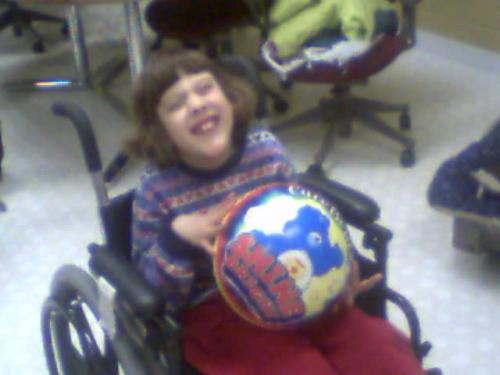Teaching Children to Respect Others Who Have a Disability

When I was a child and on an outing with my siblings and my mother, we observed a young man with cerebral palsy walking with one hip jutting outward at an awkward angle, head swinging back and forth, and moving with a slow twisted gait.
After pointing, and snickering rudely while calling him a 'spaz', my mom turned towards us with a frowning stare and indicating in no uncertain terms we had committed a serious fax paux. She told us to close our eyes, pretend that we were that young man and that someone was staring at us, pointing a finger, and yelling "spaz. . .or retard".
Then she asked how we would feel. Putting myself in that young man's place was a defining moment in our growth and we never made fun of anyone who was different again.
The aforementioned example is one way you can begin teaching children at an early age about compassion, understanding, and kindness towards others who are different. You might also point out that although someone has a birth defect, any of us could get a debilitating illness or be in some kind of accident that might leave us crippled mentally or physically at any time.
Encouraging inclusiveness in schools and extra curricular activities like Boy Scouts and Girl Scouts, etc. is another excellent way to teach understanding and acceptance of persons with mental health or physical exceptionalities. Many programs, like the income based early education program, Head Start, adopted a policy of inclusiveness years ago by placing children with disabilities into a regular classroom setting whenever possible.
This allows children to learn acceptance and understanding towards those who are different. I worked as substitute teacher's assistant and volunteer in the local Head Start program many years ago where one of the students was deaf. The teacher had had even learned sign language during the previous summer in preparation for the young girl's entrance into the program.
By the end of the school year many of the other four and five year old children could sign and knew how to face the deaf child when speaking so she could read their lips. The deaf child was fully accepted and well liked whether in the classroom, in the gym, or during outside play.
There should be consequences for children of all ages, including adolescents and teens, for verbal, social, or physical cruelty towards their peers and adults who have birth defects or other physical and mental exceptionalities.
As adults you should encourage children to be tolerant of those with a physical, developmental, or mental health diagnosis and be good positive role models by letting your children observe you treating others with dignity and kindness, as well. Everyone benefits.
By learning to treat all of their peers equally, regardless of any differences, children also learn respect for others, how to get along with others in a natural setting, and how to build healthy relationships with children and adults who have exceptionalities. And children with exceptionalities have an opportunity to make friends with, and get help from, their peers who might otherwise be emotionally or verbally abusive towards them.
My granddaughter, whose picture was used for this tutorial has a type of cerebral palsy that is physical and developmental. She has a bubbly personality, and is outgoing and friendly, speaking to everyone around her. Alexis, and other children with exceptionalities, deserve to be treated as any other child and to have the opportunity to have healthy relationships with their peers and adults.
Compassion and understanding begin at home.




